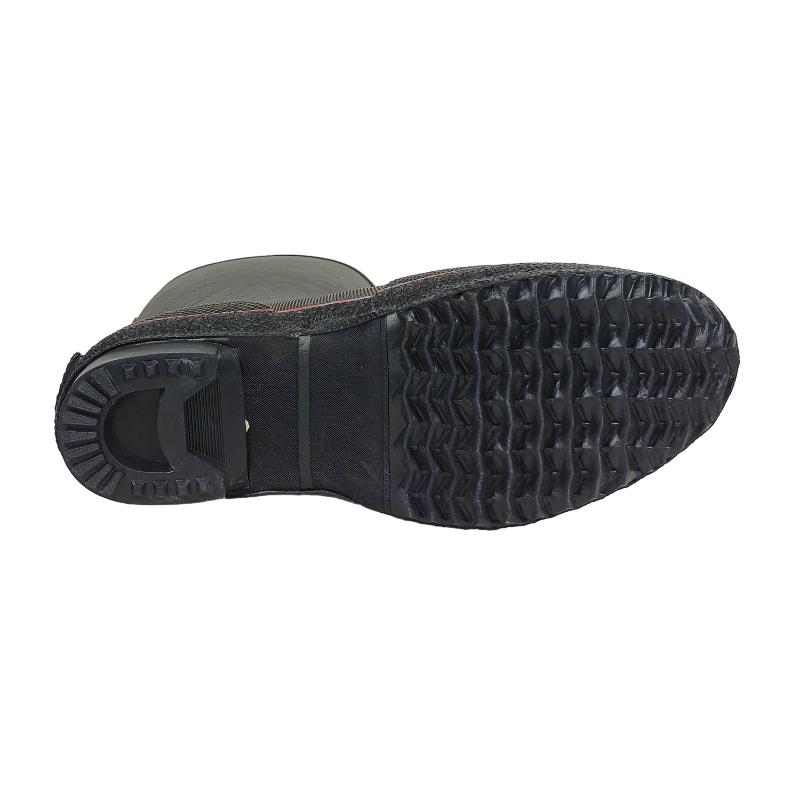The Evolution and Construction of Wellington Boots
Wellington boots, commonly referred to as wellies, are a quintessential piece of footwear that have transcended their utilitarian origins to become a fashionable staple. Named after the first Duke of Wellington, Arthur Wellesley, these boots were initially designed for accompanied military and hunting activities in the early 19th century. Over the years, they have evolved both in style and construction, making them suitable for a variety of activities and weather conditions.
The construction of Wellington boots typically begins with careful material selection. Traditional wellies were made from leather, which provided durability and comfort, but they required significant maintenance. Today, manufacturers often use rubber or polyvinyl chloride (PVC), materials that offer waterproof properties and ease of care. Rubber wellies are highly regarded for their ability to repel water and mud, making them ideal for outdoor activities and agricultural work.
The Evolution and Construction of Wellington Boots
One of the critical aspects of Wellington boot construction is ensuring that they are comfortable for long wear. This is achieved by incorporating features such as cushioned insoles and adjustable fit designs. Many contemporary wellies also include reinforced toe caps and heel support, which provide extra protection and comfort during extended use. Special attention is also paid to the tread of the boot, designed to offer excellent grip on varied surfaces, whether it be muddy fields or wet pavement.
construction wellington boots

In recent years, there has been a growing trend towards fashion-oriented Wellington boots. As a result, designers have been experimenting with colors, patterns, and styles, transforming the humble wellington into a chic accessory. Consumer demand for personalization has led to the availability of wellies in various prints—from floral to polka dots—allowing wearers to express their individuality while suited for inclement weather.
Sustainability has also become an important consideration in the construction of Wellington boots. Many brands are now focusing on eco-friendly materials and production processes to reduce the environmental impact of their products. Recycled rubber, biodegradable options, and sustainable manufacturing practices are gaining traction in the industry, appealing to environmentally conscious consumers.
Wellington boots are not just a practical choice; they have become a cultural symbol of outdoor living and weekend adventures. Their popularity in festivals, farm visits, and even city strolls highlight their versatility. Celebrities and influencers have embraced wellingtons as part of their wardrobe, further solidifying their status in the fashion world.
In summary, the construction of Wellington boots has significantly evolved since their inception over two centuries ago. From simple military footwear to stylish accessories, they combine function with fashion. As we look to the future, the focus on sustainability and innovative designs will likely continue to shape the Wellington boot market, ensuring its place as a beloved item for years to come. Whether trudging through muddy fields or strolling in the city, wellies remain a practical and stylish choice for all.
-
Stay Dry in Any Condition with WadersNewsJul.17,2025
-
Elite Performance with Camouflage Combat BootsNewsJul.17,2025
-
Dry and Comfortable with Green Rubber Garden ShoesNewsJul.17,2025
-
Convenient Protection with Foldable RainbootsNewsJul.17,2025
-
Comfort and Protection with Neoprene Work BootsNewsJul.17,2025
-
Brighten Rainy Days with Floral Rain BootsNewsJul.17,2025
-
Safety Wellies: The Ultimate Combination of Protection, Comfort, and VisibilityNewsJun.19,2025











